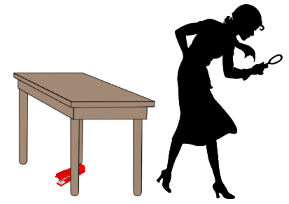| layout | title |
|---|---|
page |
This-That & Articles |
In English, we use the demonstrative pronoun "this" when we are talking about something near to us, in either space or time, and "that" when it is further away. Hungarian uses ez and az similarly. Take note that the one used in each specific situation can vary slightly from English; generally ez is used more in Hungarian, than this is used in English. Familiarity will come with practice.
Ez - This
Az - That
Just like English, these can be used in different ways. Firstly, their use in conjunction with a definite article, to specify proximity of a noun to the speaker:
- Ez a kutya. - (This dog.)
- Ez az alma. - (This apple.)
- Az a fa. - (That tree.)
- Az az óra. - (That clock.)
Note:
- Unlike in English, the definite article
a/azmust also be used. - If the noun begins with a vowel,
achanges toaz.
Secondly, thez are used to introduce new information.
- ez egy kutya - (this is a dog)
- az víz - (that is water)
- ez egy macska - (this is a cat)
- látom azt - (I see that)
Ez and az can be used to ask a question about the identity of an object.
- Mi ez? Ez egy asztal. - (What's this? This is a table.)
In this usage, egy is only used to specify that there is just one. Note that in English, where there would be "is," in Hungarian there is nothing.
An article specifies if a noun is a definite thing or an indefinite thing.
In English this is demonstrated by a/an or the. Article a is used when the following noun begins with a consonant (a flower), and an is used when that noun begins with a vowel (an icecream).
- The flower - there is definitely one specific flower being talked about.
- A flower - we are talking about any one of many flowers out there, it is not definite.
In Hungarian the articles are egy and a/az. Article egy is indefinite (it is also the number one as well), whereas a/az is definite. As we mentioned before, a is used when the noun begins with a consonant and az with a noun beginning with a vowel.
Just like in English, the indefinite article
egyis used to specify just one thing and to introduce a new noun to the conversation. As soon as this noun becomes known to the conversation, the definite articleaorazis used.
- a kutya - (the dog)
- az autó - (the car)
- egy virág - (a flower)
- egy óra - (a clock)
The definite article is also used before abstract nouns.
- az élet - (life)
- a zene - (music)
- a szabadság - (freedom)
Proper nouns don't use an article, except for specifying a type of pronoun. Similarly, this is used when talking about nouns that are members of a group.
- A Középkori Európa. - (Medieval Europe.)
- A Mai Magyarország. - (Modern-day Hungary.)
- A macska állat. - (Cats are animals.)
- A fa növény. - (Trees are plants.)
- A nárcisz virág. - (Daffodils are flowers.)
- A jacht csónak. - (Yachts are boats.)
You can also make generalisations about nouns with the definite article.
- Az egerek futnak. - (Mice run.)
- A madarak csiripelnek. - (Birds chirp.)
- A magyarok pálinkát isznak. - (Hungarians drink Pálinka.)
If you listen on public transport, the definite article is used when announcing the next stop (as a street/square) or you can hear it used for institutions and organisations.
- A következő megálló a Hősök Tere. - (The next stop is Hero's Square.)
- Sok ember van a Váci Utcában. - (There are many people on Váci Street.)
- A Balassi Intézet kiváló hely a magyar nyelvtanuláshoz. - (The Balassi institute is an excellent place for Hungarian language learning.)
The article is often omitted in certain situations in Hungarian. Aside from the examples mentioned before, all the times that English uses an indefinite article, Hungarian uses none. It is also omitted for dates.
- Ma Március 23 van. - (Today is March the 23rd.)
- Nyelvtanár vagyok. - (I am a language teacher.)
- Tűz van! - (There's a fire!)
- Kicsit jobb lesz holnap. - (It will be a little better tomorrow.)
- Szép munkát végzel! - (You're doing a nice job!)
- Kérsz kólát? - (Would you like some coke? lit. You ask for coke?)
These examples show that the quantity is not important.
Itt van Éva, ő titkárnő. Keres egy tűzőgépet. Amikor megtalálta a tűzőgépet, boldog volt. (Original image, merging free images together)
Here is Éva, she is a secretary. She is looking for a stapler. When she found the stapler, she was happy.
-emarking the possession suffix-kthe plural ending-ban,-hozwhich are locativesmeg, marking telicityjobb, an example of a comparative
Got questions? Join our discord server!: https://discord.gg/VsqppQ6
